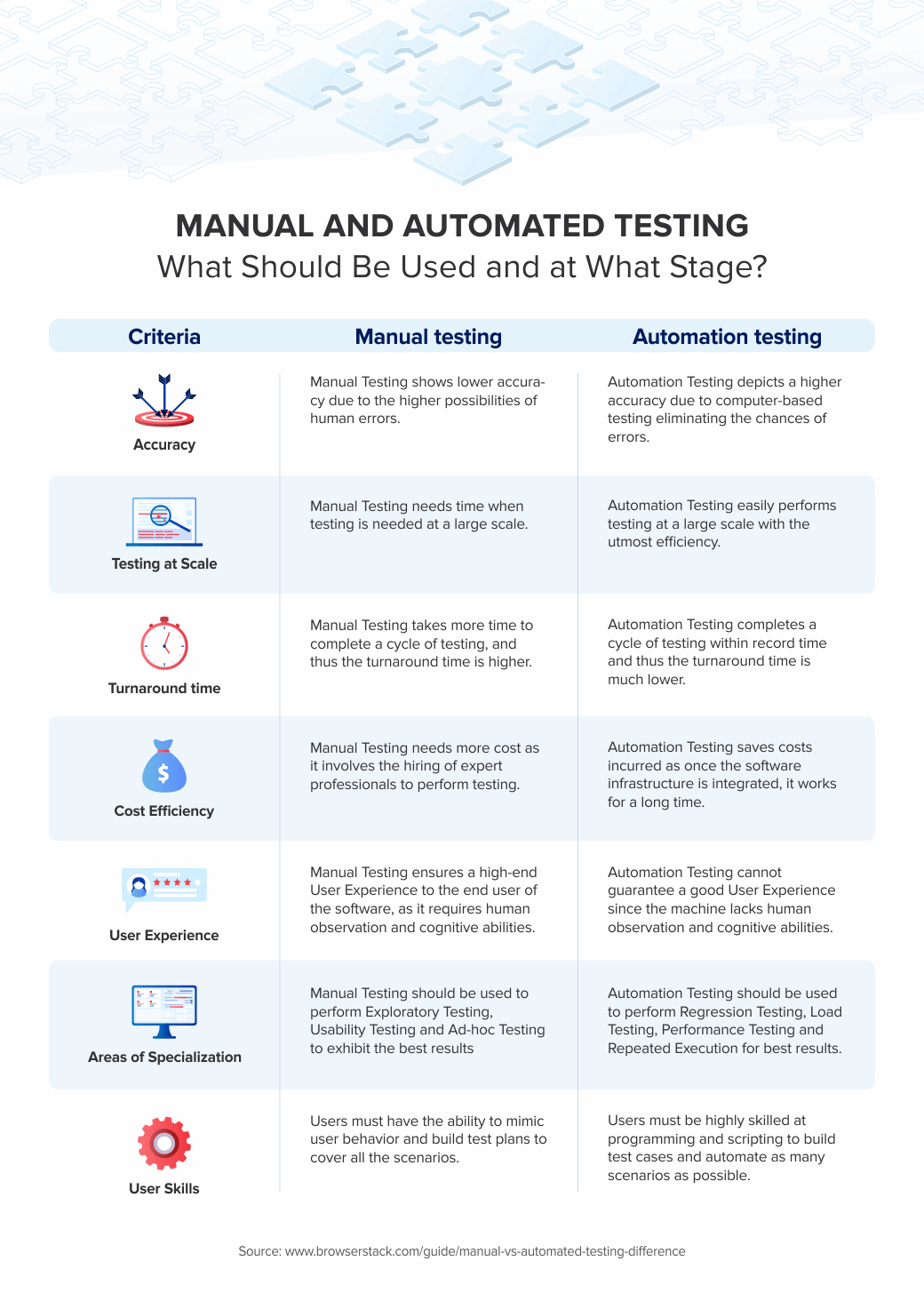The startup idea is like a little plant. It has a chance to become a big tree but requires special conditions and environments to efficiently do so. Once you've done with the initial founders' challenges (e.g. legal requirements, product-market fit, forming the team, and the right context), the development stage is ahead of you. Starting software development is always a new portion of challenges. One of them is a testing strategy for your startup. It’s usually the CTO’s responsibility but what if you don’t have one in the team?
In this case, the CEO (or founder) should make decisions not only in the implementation of new ideas but also to organize the Quality assurance (QA) processes in conditions of limited resources. Therefore, it’d be better to use a solid strategy for testing in a startup that is very likely to give a satisfactory result for the project. It will save a lot of time and effort in solving the QA problems.
Why Testing is Important for Tech Startups?
Even within the most experienced product teams bugs and mistakes do happen. Therefore, testing or QA strategy is the security umbrella to avoid any mistakes in the software and deliver high-quality products.
The testing strategy is hugely beneficial for startups looking to scale up their product and build a brand people will trust. Precisely, there are top 4 reasons explaining why testing strategy is a must-have for your startup:
Improves quality. It’s no secret that the QA strategy aims to ensure the quality of the software that was just created. A well-executed testing strategy is a guarantee of delivering quality products time after time. So, to ensure quality in the software development try to build a culture of quality in your small business and make sure the testing strategy adapts and changes with the product.
Builds customer trust. 80% of apps are deleted after one use due to customer frustrations and failure to follow expectations. A poor quality application is more likely to cause your customers to lose confidence in your brand. To increase the retention rates, the app should be bug-free to inspire customer trust and loyalty to the product.
Protects revenue. Prevention is better than a cure. Bugs are costly errors. The cost to fix a bug after the product release is four to five times higher than if it was discovered during the design stage. That is why resolving bugs early reduces associated costs and saves you money.
Allows to scale. Every startup’s aim is to scale up to become even bigger and better. But for your product to scale, your QA needs to scale with it. Having 500 adopters using your app is very different to 5,000 active users. You need to have performance testing in place to test that your software can cope with new pressure.
How to Choose the Best Testing Strategy?
To choose the best QA strategy, you should consider the following aspects:
Lack of the testing strategy is a risk that must be managed
Test coverage
Manual and automated testing - what should be used and at what stage?
Let’s discuss the mentioned aspects in detail.
1. Lack of the Testing Strategy is a Risk That Must Be Managed
Insufficient time allocated to testing is considered to be the major reason why 32% of software projects worldwide fail.
Let’s think about what the worst could happen if we neglect the testing strategy. Moreover, let’s briefly review the real-life events that happened due to bugs in the software.
Toyota recalls 625,000 cars over software malfunction.
Nissan Motor Company had to recall over a million cars due to the software bugs in the airbag sensor detectors.
60 percent of Starbucks in the US and Canada being forced to close because they were unable to process payment transactions due to bugs in the POS system.
Malaysia’s biometric system error in 2011: Travelers were pissed off after they were forced to wait nearly an hour and a half to pass through Malaysia’s immigration checkpoints. A lot of them had to change or cancel their travel plans altogether, even worse is this happen during the peak holiday season.
In 2014, Jollibee lose millions of pesos a day due to a malfunctioning system that forced some of its stores to close.
A “software logic issue” with the new signaling system and a “confluence of failure conditions” caused the train collision at Joo Koon MRT station Singapore on Nov 15, 2017.
In fact, test management in a startup is not very different from the one in large enterprises. The main difference in scale and in scale only. Thus, it scales EVERYTHING: costs, decision-making speed, response time to feedback, size, and composition of the testing team, etc.
Sure, the use of modern Agile software technologies and the development process, which is based on TDD (Test Driven Development) and its continuation BDD (Behavior Driven Development), allows you to count on a rather good quality level of the finished product.
Building a Software Development Life Cycle (SDLC) using Agile methods and mandatory implementation of TDD and BDD into the process allows you to significantly reduce the risks associated with a quality product. In our opinion, the best solution would be using TDD at the initial stage and BDD at the release preparation stage to achieve the maximum results.
2. Test Coverage
The main challenge for a decision-maker regarding testing in a startup will be the issue of test coverage.
Definitely, the product should be perfect for the consumer, but over-testing significantly increases development time and postpones the release.
It is especially important not to "not get carried away" with automated testing in the early stages of SDLC, since the volume of development will compete with the volume of autotests and such a phenomenon as Pivot (typical for startups, especially at an early stage) will be difficult.
In our opinion, the best would be a TDD Agile development process with minimal involvement of outsourcers or in-house QA engineers up to the MVP stage and the implementation of automated testing with the involvement of both our own and outsourced teams with a simultaneous shift in the development process towards BDD after receiving adequate feedback from the market regarding your product at the MVP stage.
This approach allows you to systematize the work in the QA part and establish a more efficient process, using information from the market and working with more stable specifications. As a result, test automation will be less exposed to the risk of irretrievable waste of time developing autotests for the changed functionality.
3. Manual and Automated Testing - What Should Be Used and at What Stage?
To help you decide which type of testing will be the most suitable option at what stage of your product’s SDLC, let’s look through the following table:

So, as we can see from the table: at the initial stage of project development, it is more expedient to use manual testing - since at an early stage there are no issues of scaling and load, but the issue of user comfort can be a determining factor in success. The amount of simultaneously developed functionality has not yet become critical, and batteries of tests do not require running after each commit, and therefore, manual testing is quite enough without the risk of missing critical bugs.
Obviously, after the MVP stage and with positive feedback from the market, the project receives a stunning boost (usually in the form of investments and an organically growing community) and the SDLC of the project moves to the BDD-oriented stage. Now, for successful development, it is advisable to check the functional part "by default" - using automated testing, besides, an understanding of scaling is added, and load testing is no longer necessary, accelerating development means regression and integration testing after each commit - a must-have.
Let’s Sum Up:
Testing is your insurance, but prematurely spent resources will most likely not help you conquer the market, while your overestimated Burning rate will very likely lead to failure, especially in the early stages of project development.
The optimal strategy, in my opinion, would be to conduct development based on TDD using best Agile practices up to the MVP stage. For testing, it is advisable to involve a development team and maximize the diversification of task testing between team members.
After the MVP stage, it is necessary to shift the emphasis of SDLC towards BDD and intensify the work on building the QA complex, allocating a separate team to ensure quality.
The first and most basic task of the testing team will be to build a high-quality architecture of the testing process and implement this architecture in the SDLC project, taking into account all market challenges and requirements.
Do you have some questions or you have any suggestions? Feel free to contact our team and we will assist you in any inquiry!





